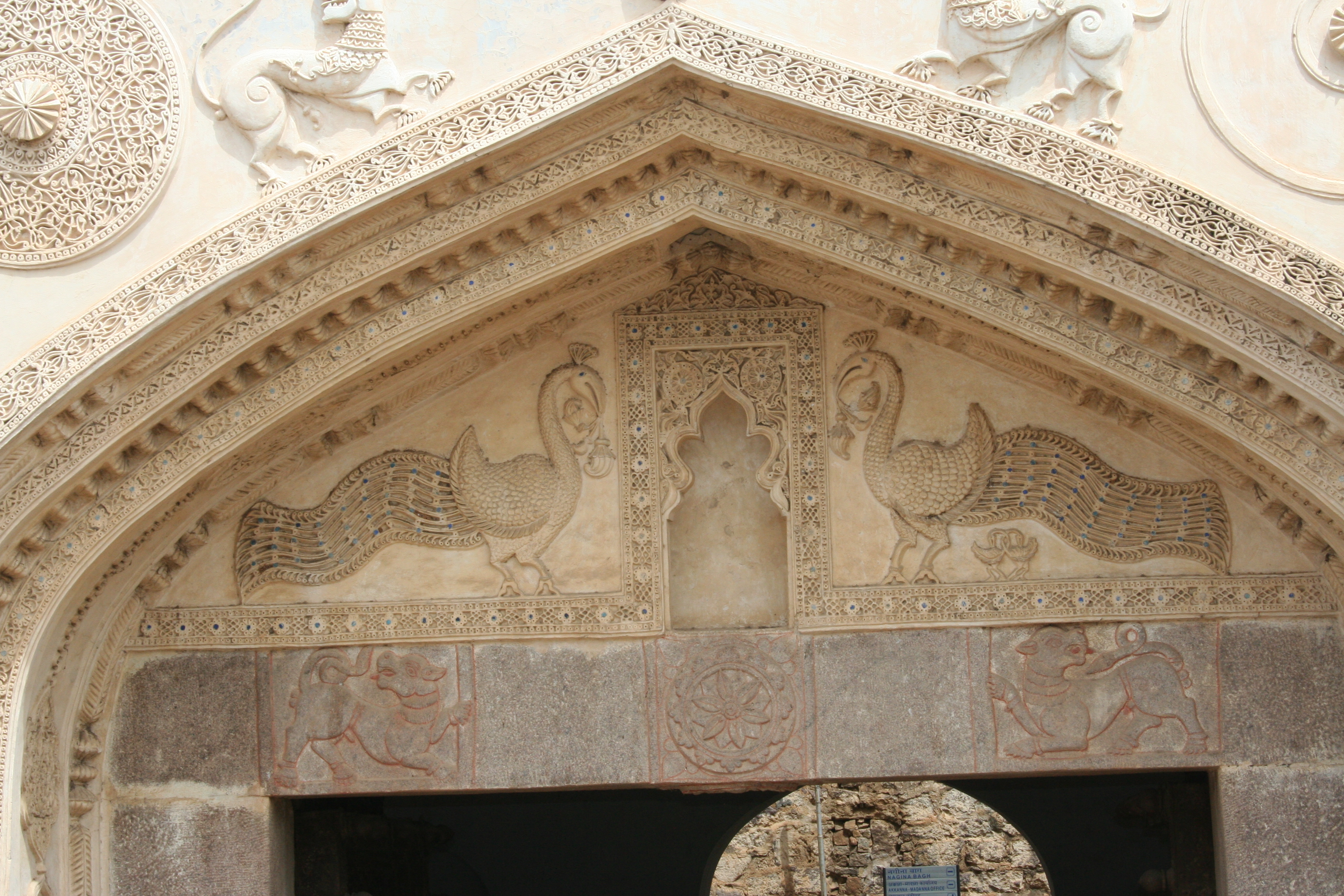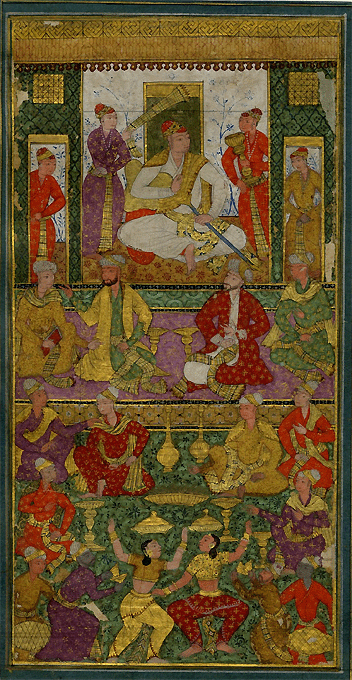Bala Hissar : Golconda Fort's acropolis
The Bala Hissar is the acropolis; at the topmost point at the Golconda Fort. The Golconda fort was a township in itself with the fort with its fortifications, bastions,gates,royal palaces, adminsitrative buildings,military offices,granary,arsenal mosques, ashurkhanas,dargahs,bazaars,hammams and roads. Sultan Quli named the area as Muhammadnagar. Golconda was the capital of the Qutub Shahis which later shifted to Hyderabad in 1591-2. However it became the capital again in 1656 when Sultan Abdullah Qutub Shah shifted there.
The Bala Hissar area marks the inner area of the fort. The entrance is through the Bala Hissar Gate which shows Indo-Islamic design in stucco between the arch and lintel with mythical animals. It is the gate to the second line of fortification walls. The baradari at the top of the hillock, is commonly called Bala Hissar. It is double storied and can be reached after climbing more than 350 steps. It is on the topmost part of the fort about 130m above ground level and is built by bricks and limestone with many big halls which were used as assembly halls. The roof has an elevated structure which was the seat of the Sultan also called Tanashah ki gaddi. There is a deep well to the left. Toward the foothill used to be the harem. It is believed that the Sultan Mohammed Qutub Shah and Sultan Abdullah used to sit on this high point and listen to music wafting from a distance from the baradaris of Taramati and Premamati, royal courtesans. The acoustics of the fort were of a very advanced nature. A clap from below can be heard at the Bala Hissar on the top of the fort area. This was used as a communication system during the Qutub Shahi times.

Bala Hissar,Golconda Fort.
By Bernard Gagnon - Own work, CC BY-SA 3.0, https://commons.wikimedia.org/w/index.php?curid=34139140

Bala Hissar Gate,Golconda Fort.
By Anupamg - Own work, CC BY-SA 3.0, https://commons.wikimedia.org/w/index.php?curid=21148479

Peacock motifs, Bala Hissar Gate, Golconda Fort.
By Smkeshkamat (Own work) [CC BY-SA 3.0 (http://creativecommons.org/licenses/by-sa/3.0)], via Wikimedia Commons

Stucco work, Bala Hissar Gate, Golconda Fort.
By Bernard Gagnon (Own work) [GFDL (http://www.gnu.org/copyleft/fdl.html) or CC BY-SA 3.0 (http://creativecommons.org/licenses/by-sa/3.0)], via Wikimedia Commons

Sultan Mohammad Qutub Shah, portrait,17th century.
By Golkonda Painters - http://www.britishmuseum.org/research/search_the_collection_database/search_object_details.aspx?objectid=265605&partid=1&searchText=mughal&fromADBC=ad&toADBC=ad&numpages=10&images=on&orig=%2fresearch%2fsearch_the_collection_database.aspx¤tPage=87, Public Domain, https://commons.wikimedia.org/w/index.php?curid=17783141

Sultan Abdullah Qutub Shah with dancers and attendants Golconda,painting,17th century.
By Deccan School [Public domain], via Wikimedia Commons
References :
- wikipedia.org
- The heritage of the Qutb Shahis of Golconda and Hyderabad/Nayeem,M.A,Hyderabad : Hyderabad Publishers,2006.
- Marg, Vol XXXVII No:3, Bombay : Marg Publications.
Posted by :
Soma Ghosh
©author



Wow! Thank you.
ReplyDelete